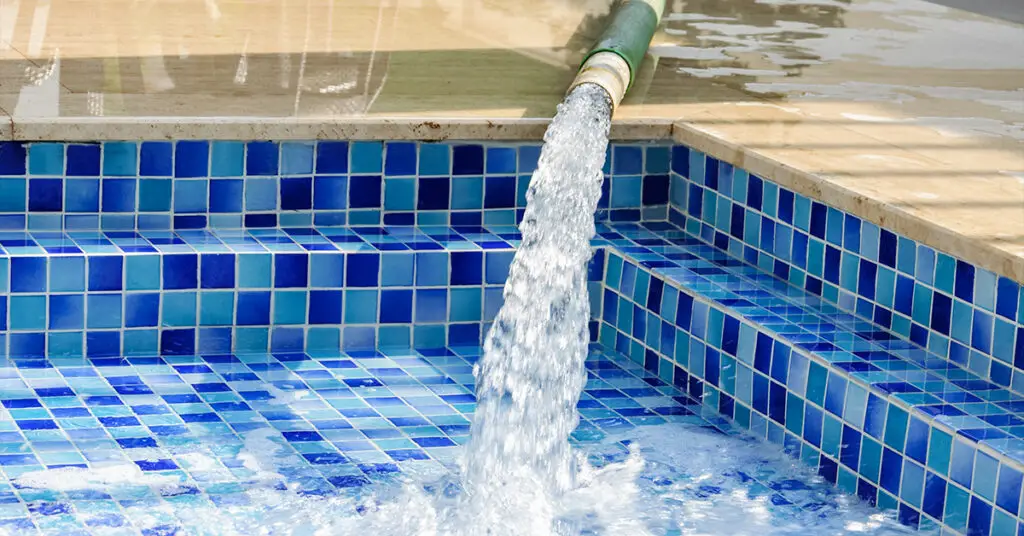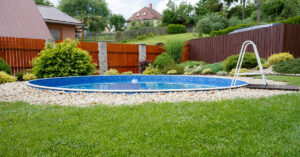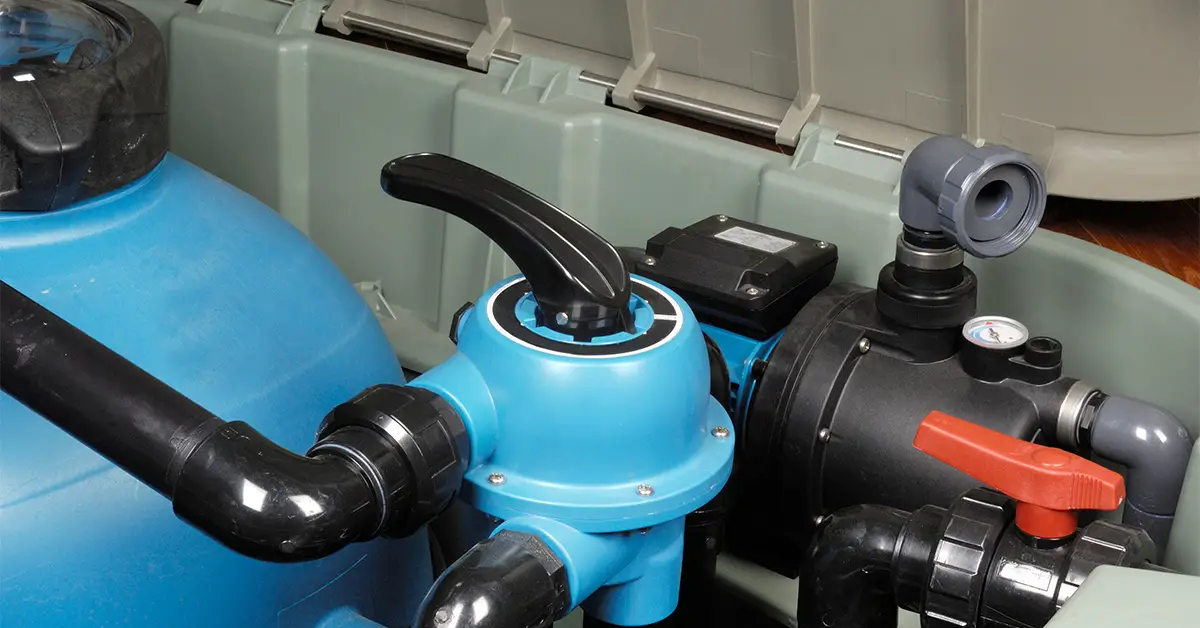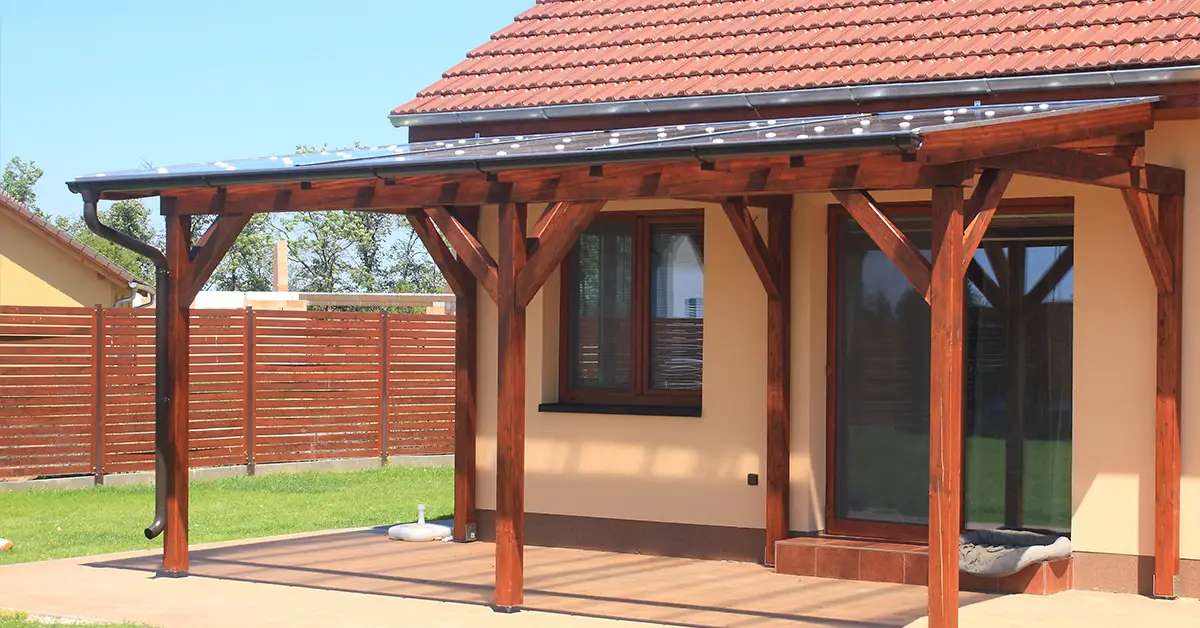Your pool is ready, but one thing is missing before you can finally have fun, rest, and relax — water. With swimming pools holding tens of thousands of gallons, it is only natural to wonder about the costs involved in the filling process. So how much does it cost to fill a swimming pool with water, you ask?
For every 1,000 gallons of water, swimming pool owners tend to pay $4 to $10. On average, the total cost of filling a swimming pool with water lies between $60 and $1,500. The cost depends on the pool size, where you live, and the option you choose for filling your pool.
If a pool holds 25,000 gallons and the water and sewerage company charges $8 per 1,000 gallons, you will spend approximately $200. (25,000 gallons/1000) x 8 = $200.
But what if you want to use well water? The cost will reflect on your electricity bill. It is tricky to give an accurate estimate, but most water well pumps are cheaper than city water.
There’s more to learn in this post. We have covered every aspect worth your attention.
Table of Contents
Calculating Swimming Pool Capacity
First things first, you need to determine the volume of your pool to figure out a more accurate cost of filling it. Knowing how many gallons of water go into your pool is imperative, as it also helps you:
- Determine the ideal amount of chemical to add to your pool
- Select appropriate pool treatment programs
- Choose the right pool equipment like pool heater or pump
Fortunately, calculating swimming pool capacity is easy. Here’s how to go about it:
a) Rectangular swimming pool
The total gallons are equal to a pool’s Length x Width x Depth X 7.5. If your swimming pool features a shallow and a deep end, you will work with an average depth.
Let’s give an example.
Let’s say your pool is 35 ft long and 20 ft wide. The height on the shallow end is 4 ft, whereas the deep end measures 8 ft. The average depth would be 6 ft.
Your swimming pool volume would be 35 x 20 x 6 x 7.5 or 31,500.
The formula is essentially the same for square-shaped pools.
b) Round or oval swimming pool
If it is a circular or round pool, you multiply the Diameter x Diameter x Average Depth x 5.9. For example, if your pool is 20 ft long and 6 ft deep, its approximate capacity would be 20 x 20 x 6 x 5.9 (14,160).
To calculate the capacity of an oval pool, you will multiply the Long Diameter x Short Diameter x Average Depth x 5.9. Assuming the long diameter is 25 ft, shorter diameter 15 ft, and the average depth 5 ft, you will need 11,062 gallons of water to fill your pool.
c) Measuring the volume of irregular pool shapes
Some swimming pools have complex shapes that can prove challenging when measuring the surface area. One of the best courses of action is breaking the complex shape into multiple regular shapes if possible. Calculate the volumes separately and sum them all up. For instance, an L-shaped pool can be divided into two rectangular pools, which are easier to calculate.
In some pool designs, you need to work with a shape that doesn’t essentially cover your pool outline. Suppose your pool is hexagon-shaped. You can base your calculation on a circular pool, with the diameter being the length of your hexagonal pool.
Alternatively, you can use an online pool volume calculator.
Options for Filling a Swimming Pool With Water
Here are your options for pool water sources:
City Water
Many ground pool owners opt for city water, as it is the easiest and most cost-friendly way to introduce water to pools. You attach one end of your garden hose to a tap and insert the other end into the pool.
On the cost aspect, city water companies charge an average of $0.004 per gallon.
According to EPA, the average American family uses 12,000 gallons of water per month. They usually pay $50 upwards. So, if you will be relying on city water to fill your pool with a capacity of 15,000 gallons, expect to see your water cost double. Even if the fees tripled, this water source option would still remain inexpensive compared to the delivery service
Keep in mind, though, city water may be subject to rationing, especially in areas that experience low levels of rainfall. And in some states, you might be slapped with fines for excessive water usage. It is best to consult your water company to steer you in the right direction.
Homeowners on municipal sewage might be required to pay extra fees for the service. Therefore, make sure you inform your local utility office before you start filling the swimming pool.
Water Delivery Service
With this option, you call a local pool water delivery company to come and fill up your pool. They use bigger hoses, meaning transferring water from their tanks to your swimming pool will be faster. Depending on your agreement, some suppliers can ship already treated water.
While water delivery service is convenient, it comes at a high cost.
Generally, pool owners spend about $300 for a truck of water. Considering the average truck can hold 6,000 gallons, the delivery company will load two to six trucks. A 30,000-gallon swimming pool would cost around $1,500.
Well Water
Well water is practically free, but not entirely — unless you have installed solar panels. The amount of electricity well water pumps consume to deliver water to your pool depends on the model, age, wattage, and manufacturer.
Most households know how much they roughly spend on electricity every month. With added equipment, it means your bill will increase. Pay attention to the changes to get an idea of the cost involved. As mentioned earlier, using well water is usually less expensive than city water.
Even if the cost might not be an issue, there are things you might want to consider. Can the well supply enough water to fill your pool without running dry?
Another thing worth mentioning is that water from a well contains a significant amount of minerals and other unwanted substances. Since you won’t be filtering them like city water plants, you will fill your pool with high pH water.
Balancing it with chemicals could be a real headache. You may end up spending a lot of money on pool treatment. What’s more, the presence of hydrogen sulfide gives water an unpleasant odor. The water smells like rotten eggs.
How long Does it Take To fill a Pool?
If you are using a water delivery service, it takes approximately 45 minutes for a truck tanker to empty into your swimming pool. When it comes to using a garden hose, the process of filling your pool is time-consuming. That’s because a standard hose releases around 540 gallons per hour. So, in other words, a 30,000-gallon swimming pool would take more than two days.
How Much Does It Cost to Run My Pool Pump?
If you are using a 2-speed pump/filter system, expect to see an increase in electricity cost by $30 to $50 per month. A one-speed pump is quite costly. It will set you back about $75 to $150 per month. You’ll want to invest in a variable speed pump to save more on electricity, especially if you own a big pool.
Pool pumps (not the well water pumps) are the heart of a pool system. They help circulate chemicals evenly throughout your pool to combat bacteria while filtering debris and dirt. For this reason, most pool pumps need to run about 8 hours a day.
How Often Should I Refill My Pool?
A well-maintained pool may need refilling once every three to five years. In some cases, such as having big leaks or wanting to stop stubborn algae, draining and refilling can happen earlier.
But in between these periods, your pool will need occasional fills. Swimming pools lose water through evaporation, minor leaks, and splashing. You need to add pool water from time to time. The pools experience the highest rate of water loss during the summer months, especially when not covered. Topping up is often required every couple of weeks.
Wrapping Up
As you can see, filling your pool with thousands of gallons in one go is not expensive as many tend to assume. Even though the overall maintenance costs can quickly add up to a significant amount, you cannot possibly put a price tag on the comfort your pool offers. The cost is certainly worth it. Now that you know how much does it cost to fill a swimming pool with water, we hope you will make better decisions.







